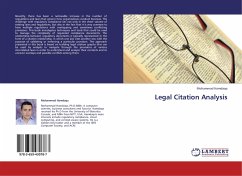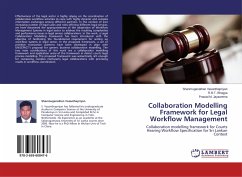Recently, there has been a noticeable increase in the number of regulations and laws that govern how organizations conduct business. The challenge with regulatory compliance lies not only in the sheer volume of existing laws and regulations, but also in the fact that it is very common to have multiple regulations with overlapping and sometimes conflicting provisions. This book investigates techniques and tools that could be used to manage the complexity of regulated compliance documents. The relationship between regulatory documents is typically represented in the form of a citation relationship, in which one law cites another law with the purpose of validating or enforcing a particular provision. The approach presented in this book is based on building legal citation graphs that can be used by analysts to navigate through the provisions of various interrelated laws in order to understand and analyze their contents and to uncover overlaps and possible conflicts among them.
Bitte wählen Sie Ihr Anliegen aus.
Rechnungen
Retourenschein anfordern
Bestellstatus
Storno








